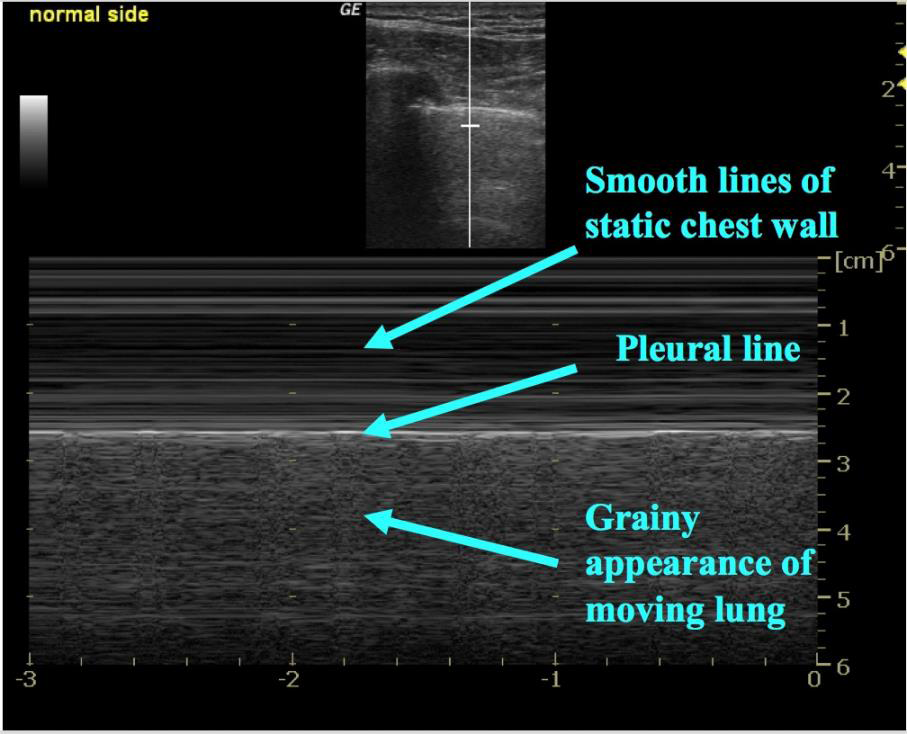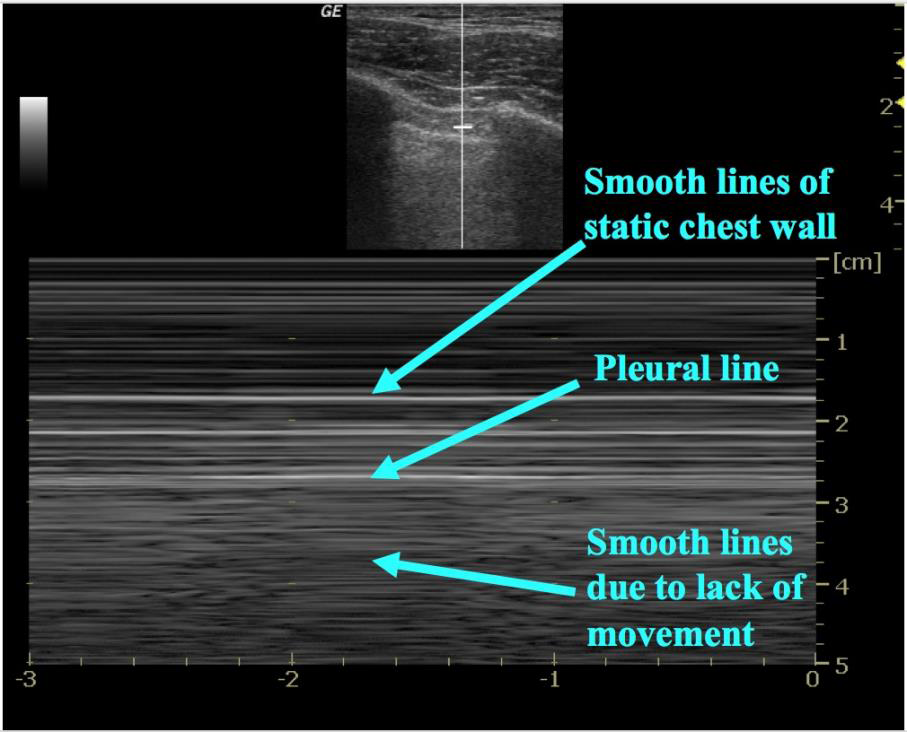What is NOT normal?
When air enters the pleural space separating the parietal and visceral pleura the air cannot be seen directly. The absence of shimmering and comet tails indicates the two pleural layers are not in contact as is the case with pneumothorax (video 3).
Video 3: Absent pleural motion: pneumothorax
If no shimmering or comet tails are visualized, pneumothorax is likely but the clinical context should be considered. Some conditions can mimic pneumothorax with absent or minimal pleural motion.
A pneumothorax at the level of the probe is indicated by the ABSENCE OF BOTH:
- Lung sliding
- Comet tail artifacts
Confirm with M-mode
When pleural motion is minimal it can be difficult to appreciate. If there is uncertainty M-mode can be used to help identify the presence or absence of a pneumothorax. M-mode, or motion mode, plots structures visualized on a thin line of the ultrasound image across time on the x-axis and depth on the y-axis. To use M-mode, press the “M” button on the machine and make sure the vertical marker is over a section where the pleural line is not shadowed by a rib. Identify the pleura in the M-mode image identify the brightest white line on the, M-mode view at the corresponding depth.
In normal lung, the motionless chest wall appears as horizontal lines and the and movement of pleural and lung beneath the pleura creates a grainy, coarse pattern (figure 3). When obtaining an M-mode image it is imperative to hold the probe very still on the chest wall. The movement of an agitated or very dyspneic patient can make the image difficult to interpret.
 Figure 3: Seashore sign (normal)
Figure 3: Seashore sign (normal)
In pneumothorax motion is absent in the chest wall, pleural line and below. This lack of motion creates smooth, horizontal lines throughout when viewed in M-mode (figure 4).
 Figure 4: Barcode sign (pneumothorax)
Figure 4: Barcode sign (pneumothorax)
